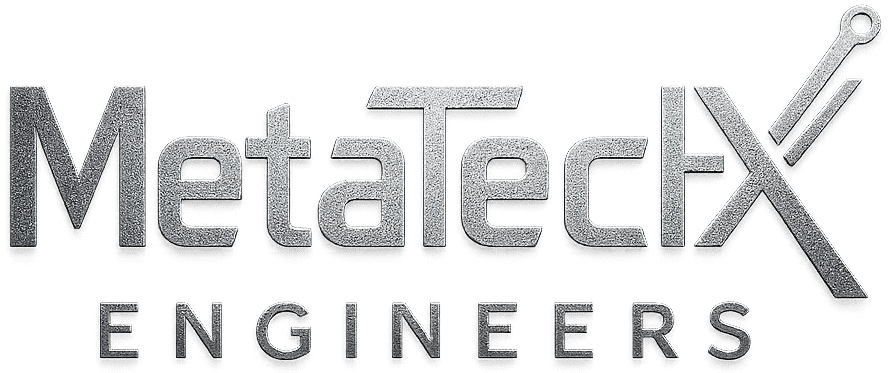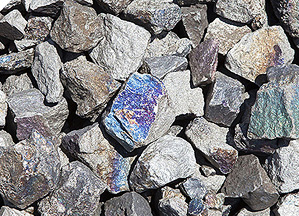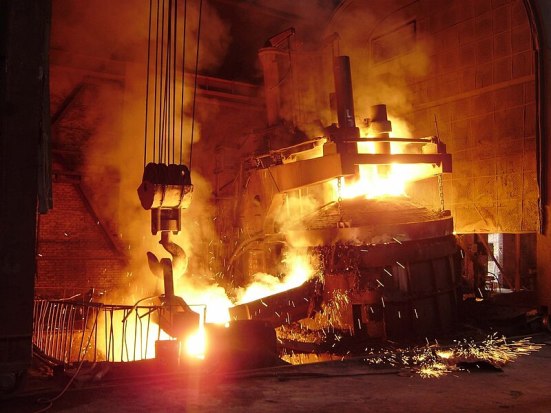Hazard Identification and Risk Assessment (HIRA) in Induction Furnace Operations for Steel Making
Induction furnaces are widely used in the steelmaking process due to their energy efficiency and ability to produce high-quality steel. However, their operation involves several hazards that require systematic identification and assessment to ensure workplace safety. Detailed explanation from MetaTechX Engineers:
1. Common Hazards in Induction Furnace Operations
1.1 Thermal Hazards
- Hot Metal and Slag: Exposure to molten metal and slag during pouring and tapping operations.
- Heat Radiation: High radiant heat from the furnace can cause burns and heat stress.
- Explosion: Moisture in scrap or improper charge materials can lead to steam explosions.
1.2 Electrical Hazards
- High Voltage Equipment: Induction furnaces operate at high voltages, posing risks of electrocution or arc flashes.
- Faulty Insulation: Damaged cables or poor maintenance can lead to electrical short circuits.
1.3 Fire Hazards
- Combustible Materials: Accumulation of grease, oil, or dust near the furnace can ignite.
- Leakage of Cooling Water: Contact between cooling water and molten metal can cause fire or explosions.
1.4 Mechanical Hazards
- Material Handling: Improper handling of scrap or tools can cause injuries.
- Furnace Components: Moving parts such as tilting mechanisms can lead to crush injuries.
1.5 Chemical Hazards
- Toxic Fumes: Emissions from melting materials or improper combustion can release harmful gases like carbon monoxide (CO) and sulfur dioxide (SO₂).
- Refractory Materials: Handling refractory lining can expose workers to silica dust, causing respiratory issues.
1.6 Ergonomic Hazards
- Manual Handling: Lifting heavy scrap or tools can lead to musculoskeletal disorders.
- Postural Strain: Prolonged standing near the furnace can cause fatigue or injuries.
1.7 Noise Hazards
- Furnace Operations: High noise levels from induction equipment can lead to hearing loss over time.
1.8 Operational Hazards
- Overloading the Furnace: Excessive loading can lead to furnace failure or spillage of molten metal.
- Power Failure: Sudden power outages can cause process disruptions, leading to safety risks.
2. Risk Assessment
Risk assessment involves evaluating the likelihood and severity of each hazard to prioritize control measures. Here is a framework for risk assessment:
2.1 Risk Matrix
| Likelihood \ Severity | Minor (1) | Moderate (2) | Severe (3) | Critical (4) |
|---|---|---|---|---|
| Rare (1) | Low | Low | Medium | Medium |
| Unlikely (2) | Low | Medium | High | High |
| Likely (3) | Medium | High | Very High | Critical |
| Almost Certain (4) | Medium | High | Critical | Critical |
2.2 Sample Risk Assessment for Key Hazards
| Hazard | Likelihood | Severity | Risk Level | Controls |
|---|---|---|---|---|
| Molten Metal Spillage | Likely | Critical | Critical | Use proper PPE, maintain furnace integrity, and implement spill containment. |
| High Heat Exposure | Likely | Severe | Very High | Provide thermal protection suits and ensure adequate ventilation. |
| Toxic Fume Emissions | Likely | Severe | Very High | Use local exhaust ventilation and monitor air quality. |
| Electrical Shock | Unlikely | Critical | High | Regularly inspect electrical systems and provide grounding. |
| Explosion from Wet Scrap | Likely | Critical | Critical | Preheat scrap, inspect for moisture, and train workers in safe practices. |
3. Control Measures
Control measures follow the Hierarchy of Controls, which prioritizes elimination and substitution over other methods:
3.1 Elimination and Substitution
- Use pre-dried and preheated scrap to eliminate moisture-related explosions.
- Substitute hazardous materials with safer alternatives where feasible.
3.2 Engineering Controls
- Install spill containment systems around the furnace.
- Use advanced cooling systems to prevent overheating or water leaks.
- Equip the furnace with automated systems for tilting and tapping to minimize manual intervention.
- Provide local exhaust ventilation to remove toxic fumes.
3.3 Administrative Controls
- Training: Train workers on safe furnace operation, emergency response, and hazard recognition.
- Standard Operating Procedures (SOPs): Develop and enforce SOPs for every operation step.
- Monitoring: Conduct regular audits and inspections of equipment and safety measures.
- Emergency Preparedness: Prepare detailed plans for fire, explosion, or power failure scenarios.
3.4 Personal Protective Equipment (PPE)
- Use heat-resistant gloves, face shields, and thermal suits to protect against burns.
- Provide respiratory protection for workers exposed to fumes and silica dust.
- Equip workers with hearing protection to mitigate noise hazards.
4. Emergency Response Measures
- Fire Suppression Systems: Install fire extinguishers and automated suppression systems.
- Spill Containment: Ensure emergency kits are available for handling molten metal spills.
- First Aid: Provide first aid facilities for treating burns, heat stress, or other injuries.
- Evacuation Drills: Conduct regular drills to prepare workers for emergency situations.
5. Monitoring and Review
Regular monitoring of hazard controls and a periodic review of risk assessments are critical. This ensures that new hazards are identified, and existing controls remain effective.
Hazard identification and risk assessment in induction furnace operations are essential for ensuring worker safety, process efficiency, and compliance with safety standards. By implementing a comprehensive HIRA framework, steelmaking facilities can minimize risks and foster a safer working environment.




